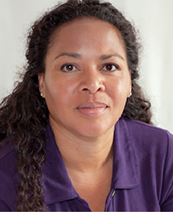 I attended this year’s Reunion Weekend as an itinerant, roving from one class event to another, relishing the conversations with so many alumni from all over the world.
I attended this year’s Reunion Weekend as an itinerant, roving from one class event to another, relishing the conversations with so many alumni from all over the world.
On Friday night I stopped at the Class of 2009 party feeling wrinkly and old, but I soon forgot about that when I met Mijon Zulu ’09. Anyone familiar with Sub-Saharan Africa, where Mijon and I come from, will know that
family names identify us almost down to the village. We talked about what his surname told me: that, like me, he has roots in Zambia; that our fathers are of the same tribe (Ngoni); that their fathers were probably from neighboring villages near the provincial capital (Chipata); and that there might even be a chance we share common ancestry. That this conversation took place in a tent outside Gladden felt improbable.
I attended the Joseph’s Coat Award luncheon on Saturday, where I had the honor of conferring the madras jacket on devoted volunteer Hugh Germanetti ’54. I was excited for the lunch, attended by post-50th reunion classes, because I love learning about the old days of Williams. Flanked by past award recipients Fred Goldstein ’52 and Wayne Wilkins ’41, I pressed them for stories. One of the nuggets I gleaned is that women took classes at Williams much earlier than 1970, the year we traditionally think of as the beginning of coeducation. Moreover, the first female president of the Society of Alumni was Katharine (Mills) Berry, an economics major with a degree year of 1957.
I have been pondering in the weeks since reunion the conversations I
had with the oldest and youngest of our alumni. What is it like to come to Williams from a different continent? What must it have been like to be one of a handful of women studying on campus before “official” co-education? What must Berry have been like to have had the degree conferred upon her?
Thinking about these conversations and countless others from the weekend, the revelation is that all of our stories—Mijon’s, Katharine’s, mine and yours—bear the familiar theme of grappling with finding a sense of belonging on this remote, rural campus. They point to a more organic quality of the institution, like a living system.
Thinking about Williams in this way, it becomes easier to see beyond the superficial and visually obvious differences between us that only mask the extent to which our common experience of this lush, green campus binds us to each other. The new connections we make refresh, enrich and expand our relationship with this place.
I look forward to serving you as president for the next two years, along with VP Jordan Hampton ’87. I hope that you continue to find each other out there in the world, talk to each other about Williams and, in the process, be a friend, mentor or adviser to another alumnus. And please send your observations, comments and suggestions to me at [email protected].
Leila Jere ’91
President, Society of Alumni
[email protected]



